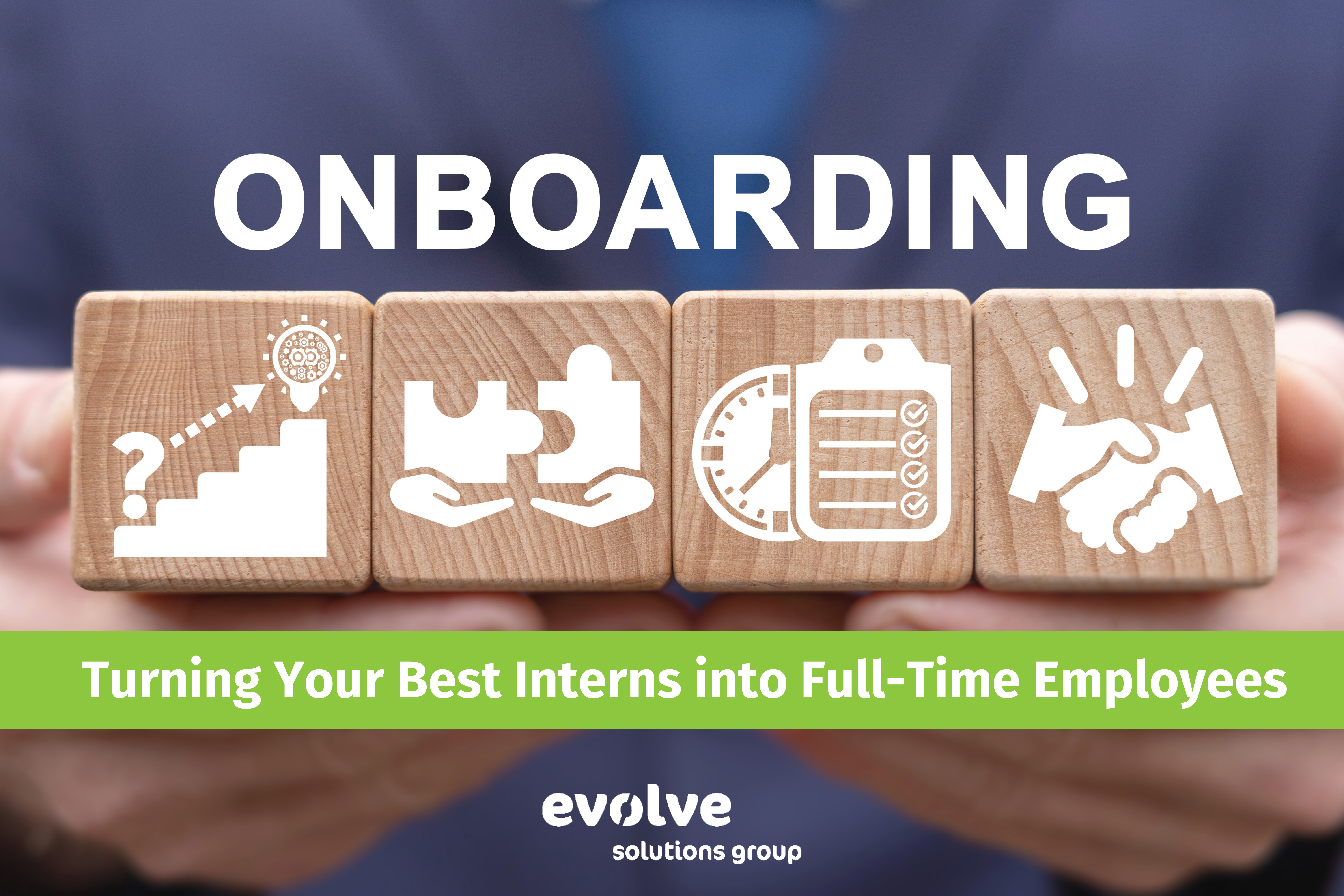If your organization hasn’t already, now is a good time to start planning for your summer interns. Each year can bring a wave of talent ready to learn and eager to begin their career, whether they’re looking to gain industry experience, earn credit, or newly graduated and ready to work. Internships are not only a great way to gain fresh perspective on your team, they can potentially be a pipeline for future hires by nurturing top talent early on.
With new talent it’s likely your organization will be your intern’s first experience in the professional world. It’s important to be mindful of their new beginning and give them the best you’ve got. To not only provide a valuable learning experience for aspiring professionals, but possibly even retain the good ones as employees, your onboarding process will be one of the first impressions they’ll have of your organization. Our Onboarding Checklist (which you can download for free here!) details the first 90 days of Onboarding and with summer interns, that might be all the time you get with them.
Here are five ways to ensure your internship program is a resounding success:
1. Craft an Impactful Onboarding Process
Before selecting an intern ensure you have onboarding processes that will be applicable to interns and their specific roles and responsibilities they’ll have that will help them meet your expectations. An effective onboarding process will introduce company culture and values, provide an overview of processes and procedures, as well as any needed safety protocols. This initial step sets a foundation for a meaningful learning journey.
2. Have Strategic Conversations for Success
As well as any orientation and training your interns will receive, there are multiple discussions that can happen. Sit down with your intern to discuss whether there are opportunities for employment after their internship ends, see where there are opportunities to specialize their internship to their career aspirations, and find out what they’re hoping to gain from their time with your organization. There is also an opportunity to gain perspective into the quality of their time with you by facilitating an exit interview, even if you’re hopeful of bringing them onto the team in the future. This can help you refine your internship onboarding process further.
3. Mentorship and Social Integration
Pair your interns with mentors and encourage open communication and questions. When possible, organize team-building activities and events as needed – this is also important in a virtual working environment. Facilitate interaction with leaders in your organization and most importantly create opportunities for them to connect with any newer employees you have. Since they’ve most recently joined the team, they’re likely to offer a different perspective than a seasoned employee.
4. Hands-on Experience
Once they’re onboard, allow your interns to work on projects that challenge them and give them the time and resources they need to produce work they are proud of. Encourage creativity that will drive innovation, foster a culture of collaboration and teamwork, and offer support as needed.
5. Progress Tracking and Performance Evaluation
Help your interns set clear goals and objectives for their new roles and regularly assess them for performance and growth. Provide constructive criticism as needed and give recognition regularly. When you can identify areas for improvement, you or another member of the team should be able to offer guidance on professional development in that area. Schedule meetings, send opportunities for training, and readily include them in discussions around projects, clients, and your industry. This is an opportunity to get them excited about a potential future at your organization.
Organizations that invest in robust onboarding processes, engage in strategic conversations, foster mentorship, provide hands-on experience, and implement effective progress tracking and evaluation, not only ensure a valuable learning experience for aspiring professionals but also lay the groundwork for potential future hires.
If your organization needs a more effective onboarding process, contact us for a free consultation where our Learning & Change experts can help your organization with the onboarding process and the ongoing pursuance of employee retention. And don’t forget to download our Onboarding Checklist and check out the accompanying deep dives on the first 30 (Mastering the First 30 Days), 60 (Maximizing Potential), and 90 (Sustaining Success) days of onboarding.

